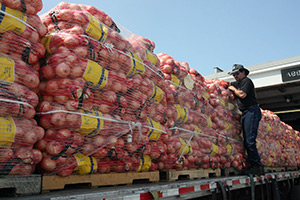Wholesale Prices Fall for Fourth Month

Wholesale prices in the U.S. unexpectedly declined in February for a fourth consecutive month, reflecting cheaper food and a slump in profit margins among wholesalers and retailers.
The 0.5% decrease in the producer price index followed a 0.8% drop the prior month, a Labor Department report showed March 13. The median estimate in a Bloomberg survey of 73 economists called for a gain of 0.3%. The so-called core measure, which strips out volatile food and fuel, also decreased 0.5%.
Inflation in the U.S. has decelerated as a rising dollar cheapened the cost of imports and crude oil slumped. Federal Reserve policymakers are awaiting signs that inflation will move back up toward their target as they consider raising interest rates for the first time since 2006.
“Inflation is very much controlled in this environment, and we have a rising dollar that’s going to put downward pressure,” said Robert Brusca, president of Fact & Opinion Economics in New York, whose forecast for a 0.2% decrease in the price index was among the closest in the Bloomberg survey. “The Fed very much wants to get inflation up into its target zone so that it can be more comfortable with where policy is, but it’s just not happening.”
Estimates in the Bloomberg survey ranged from a 0.2% decline to a 0.7% gain. Prices excluding food and energy were projected to rise 0.1% after falling 0.1% the month before, the survey median showed.
Compared with a year before, producer prices fell 0.6%, the first 12-month decrease since records began in 2009. The core index increased 1% in the 12 months ended February, after a 1.6% gain.
Eliminating food, energy and trade services, which some economists prefer because it strips out one of the most volatile components of PPI, costs were unchanged last month after falling 0.3% in January.
A 1.5% drop in trade services reflected a plunge in profit margins among a broad swath of wholesalers and retailers, including service stations, clothing stores and trucking companies. It was the biggest decrease in trade services since record-keeping began in 2009.
The producer price gauge is one of three monthly inflation reports released by the Labor Department, which also produces the consumer price index and the import cost measure.
The cost of services decreased 0.5% last month, while prices for goods dropped 0.4%.
Energy costs were little changed last month after a 10.3% drop in January. Food prices declined 1.6%, the most since April 2013.
Lower gasoline prices have been leaving a little more money in consumers’ pockets, allowing them to spend or save extra income. The average price of a gallon of regular unleaded gas was $2.44 on March 11, down from last year’s peak of $3.70 in April.

